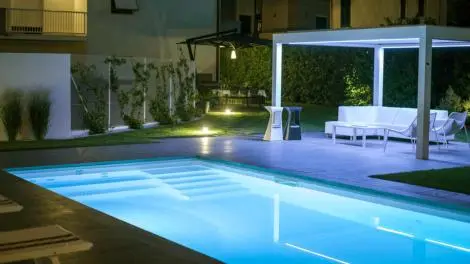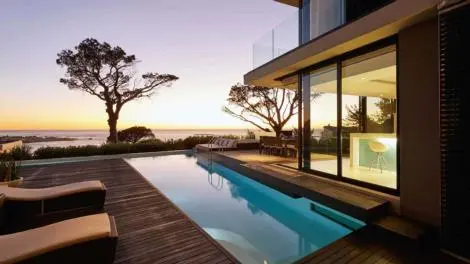While some swimming pools are designed for entertainment and leisurely exercise, others are meant for athletic training or hydrotherapy. A pool’s type, designs, and styles are directly related to the intended use.
Furthermore, the cost of building a pool varies from one option to the other. Also, a lot depends on the aesthetic features and the concrete pool operation. That’s why we have created this guide, so you can opt for something that meets your requirements and budget.
Without further ado, let’s dive in.
Swimming Pool Types, Designs, and Styles
Above-Ground Pool
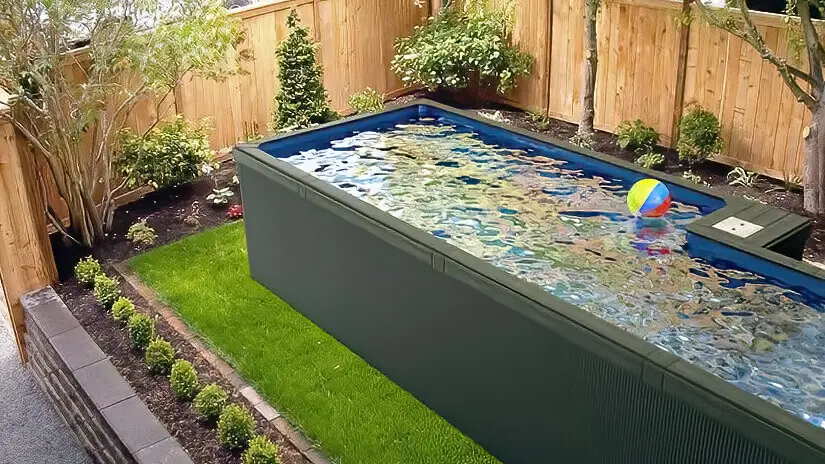
An above-ground pool is one of the most affordable pool styles, touted for its practicality and easy maintenance. So, if you’re low on finances and want to create a fun water zone for your family, this is the ideal option.
Unlike other designs and styles, it’s easy to install and does not entail an elaborate procedure. You can choose from various layouts and even pick the construction material per your requirements. Furthermore, you can also find portable above-ground pool options with built-in features like jet sprays and lights.
Besides, digging a pool is challenging with certain lands and rocky areas. Therefore, avoiding the whole excavation project is a feasible backyard addition. Plus, it’s much safer, as the entry point is much higher above the ground, minimising the risk of falling in.
You may add a deck later to enhance the overall look, and it’ll still cost you less than other styles. Overall, an above-ground pool allows enjoyable and hassle-free swimming sessions within a modest budget.
Family Pool Or Recreational Swimming Pool
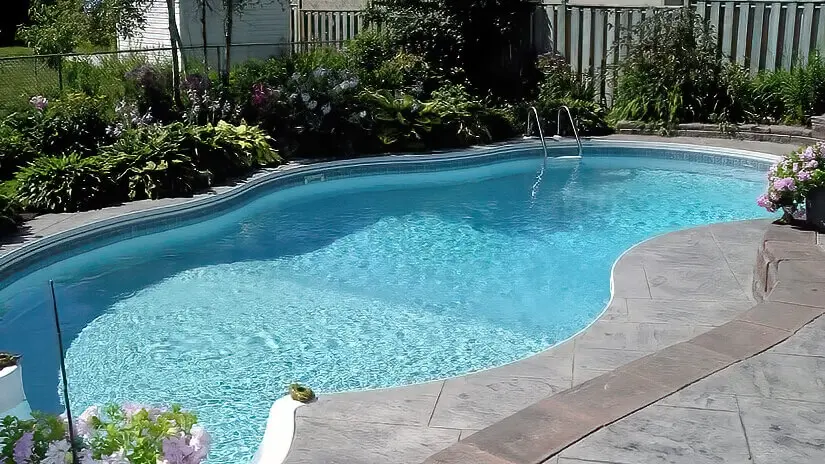
A recreational pool is an excellent option to create the perfect water activity zone for your family. While adding all the elements is not mandatory, you can incorporate some exciting features to make things more relaxing and fun.
These pools are much like water parks, only smaller and with fewer people. Furthermore, it’s a great hangout option where you can unwind with your family on the weekends. As for the features, you may include pool slides, tunnels, caves, and boulders, instantly making it more appealing to kids.
So, if you want your little ones to jump and splash around in the summers, we recommend these mini water parks. Furthermore, you can also work in a few laps, as they tend to be quite large and spacious.
Architectural Pool
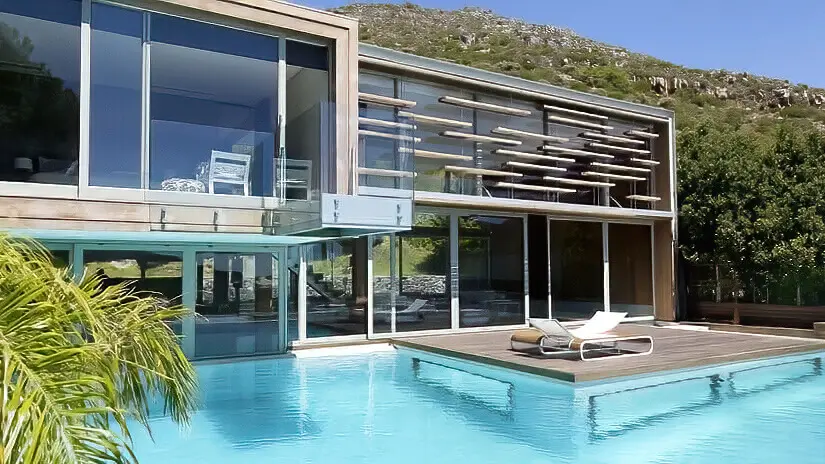
As the name suggests, an architectural swimming pool must have structure and symmetry. It’s all about precise lines and layouts that, more often than not, correspond to the shape of the house. Also, it’s made using the same materials as the house for a neat and cohesive look.
Besides, these pools are usually designed by an architect, as they involve much planning and sophistication, unlike other less elaborate projects. Generally, these pools are built while constructing the house since they consider the plot area, building plan, and other prerequisites.
Furthermore, the house and pool should perfectly complement each other, and the latter should not stick out like an eyesore. Therefore, an architectural pool is the best option for homeowners to enhance the overall look and curb appeal.
Indoor Pool
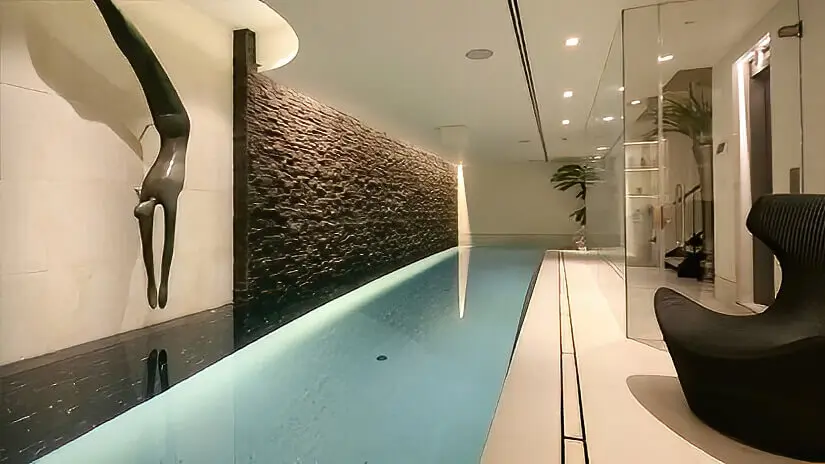
An indoor pool is exactly what it sounds like — inside an establishment with a roof on top and at least three walls insulated. This style entails a simple layout and is primarily built for swimming or training around the year, especially in cold climates.
Besides, running an indoor heating pool costs less than outdoor ones since the pool room is insulated, and the heat is less likely to escape. Also, it’s undoubtedly easier to clean and maintain than external varieties.
Infinity Pool
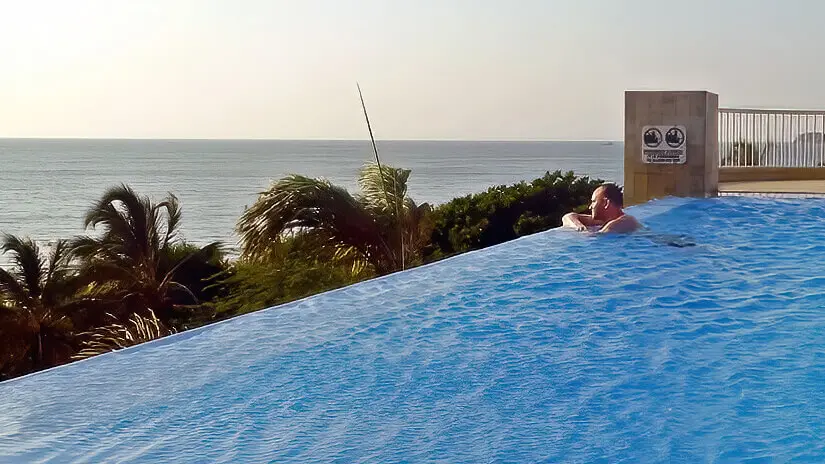
Infinity pools also have some names, including vanishing edge pools, zero edges, negative edge, or infinity edge pools. These structures are custom-built, and most importantly, they’re designed to highlight a grand view.
When done perfectly, these pools create an illusion of a water edge that seems like one side ends in a waterfall. You cannot see or hear falling water, but it’s all about the visual effect that it creates. They’re far more expensive than other residential options and are usually found in commercial establishments.
Lap Pool
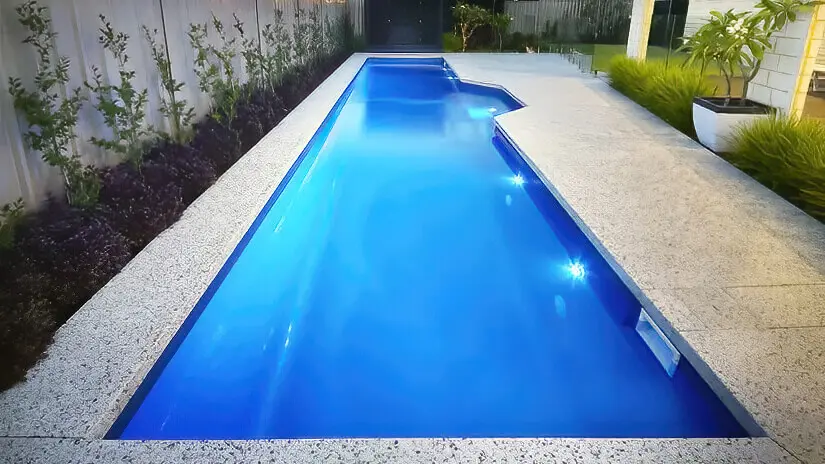
A lap pool is typically constructed for fitness and health purposes. They are usually long (often more than 50 ft) and narrow, allowing swimmers to practice lengthy strides.
They have a rectangular shape and may include features contributing to the user’s fitness and agility.
Natural Pool
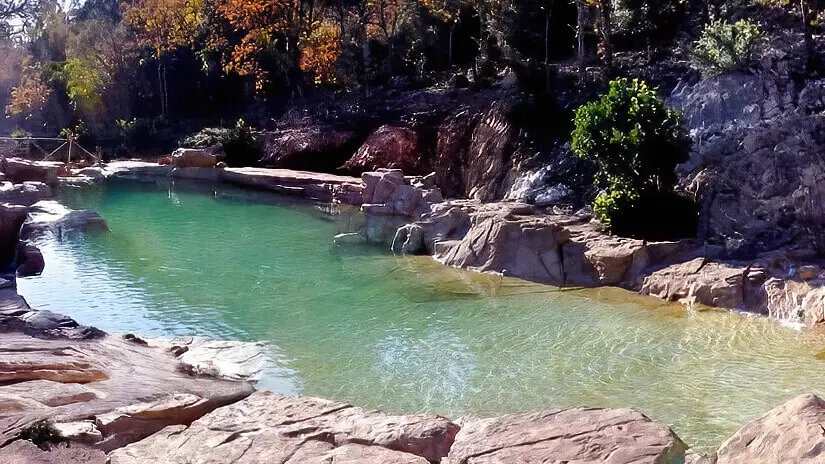
Natural pools (or swimming ponds, as known in Europe) are a concept that dates back to the 1980s and are self-cleaning water bodies with an unbeatable visual appeal. Long story short, these pools combine a swimming enclosure and water gardens.
Like in-ground styles, a natural pool can have an asymmetrical layout, include boulders and waterfalls, or feature a sleek and elegant design.
Typically, natural pools are lined with reinforced polyethylene or rubber material. A separate ‘regeneration’ zone within the pool has aquatic landscaping and a cleaning system.
Meanwhile, pumps and skimmers circulate water through the regeneration zone, pushing it across a wall of rocks, tiles, or loose gravel. Furthermore, the bacteria on the wall act as an additional biological filter.
Speaking of a pond, the image that immediately crosses our mind is a murky water body with low visibility. However, a natural pool has sparkling clear water right to the bottom. Usually, these pools are more expensive than conventional ones.
Nevertheless, the overall costs depend on landscaping, plant life in and around the pool, and gardening features. That said, natural pools are the best green alternatives to artificial chlorinated pools.
Saltwater Pool
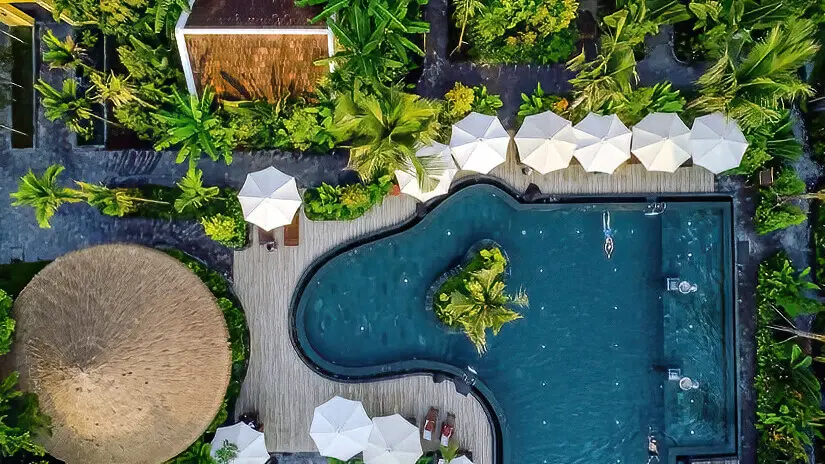
Saltwater pools are not structurally distinguishable from other traditional pool varieties, primarily because it’s not a design category. Any swimming pool equipped with a saltwater chlorinator or generator can be included during construction or later.
These are widely popular in New Zealand and Australia and have entered the US. Saltwater is known for its healing properties, and as such, many people prefer salt baths to relieve joint pains and swelling.
Therefore, the purpose is more therapeutic rather than recreational. Furthermore, it’s not limited to in-ground options; you can add a chlorinator to compatible above-ground pools.
Plunge Pool
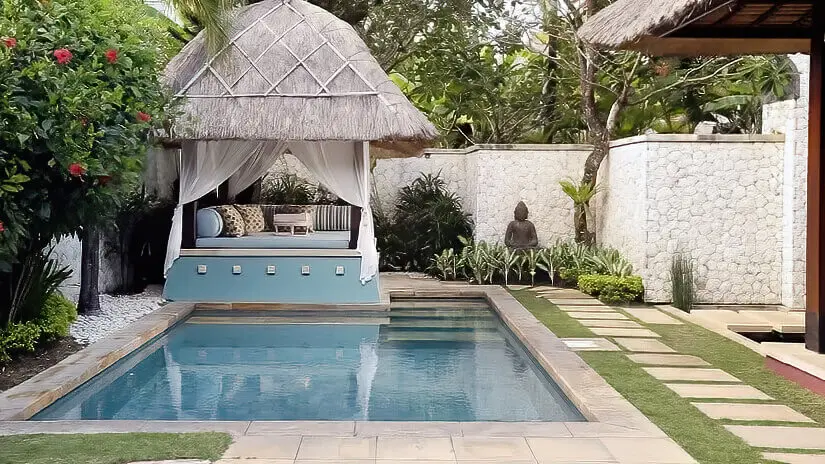
Plunge pools are small, cold-water enclosures used for treatment for thousands of years in China. Besides they were also popular in Ancient Rome. Plunge pools are ideal for swimmers and athletes who want to cool off after an intense workout or sauna session.
These pools are suitable for complete immersion and help you to relax post-training. They have therapeutic properties that ease taut muscles and help relieve body stiffness.
Besides, these structures are flexible because the pool can be built separately or as a section of a bigger in-ground pool. They may look like a spa, but the pool’s depth will reveal otherwise once you get in.
Spool
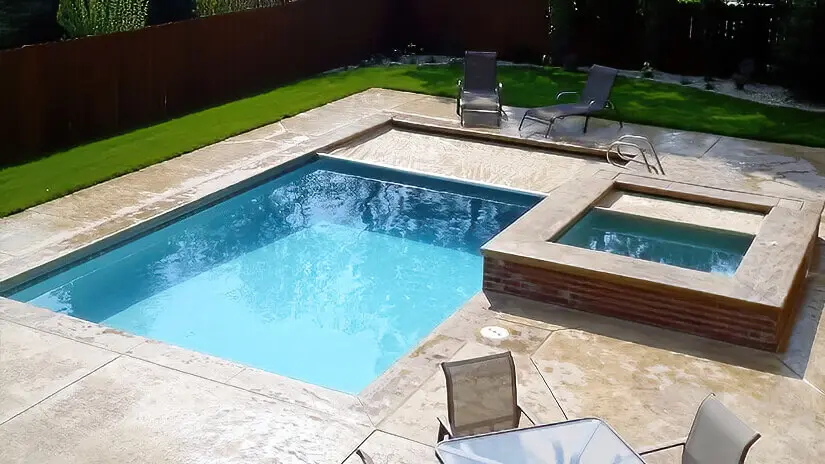
The term spool is an amalgam of the words spa and pool. With pool construction costs, several homeowners prefer custom-built spools to a full-size variety. Furthermore, this design is easier to maintain and operate in the long run.
While some prefer this mini pool for relaxation and entertainment, others soak in lukewarm or cold water on sweltering days. Since they are not as expensive to build as a larger pool, you can add multiple features like jet sprays, lights, massaging jets, etc.
Final Words on Pool Designs
That’s all about pool types, designs, and styles.
And we hope you can find a suitable option for your home. Nevertheless, we suggest contacting a reliable contractor for an estimate if you plan on building a pool. After all, the functionality and appearance of the pool also depend on the structure itself.
You must figure out the area to be dedicated to the pool and how much time it’ll take to complete the project. If you want an in-ground pool, excavation will take a few weeks.
Other than that, it would help if you also weighed in the operational costs, as the pool needs to be periodically drained and refilled. And you have to carry out monthly inspections and maintenance as well.
The scenario is not too different for above-ground options; however, the cost is undoubtedly lower. On that note, we’d like to take your leave.
Till next time!

